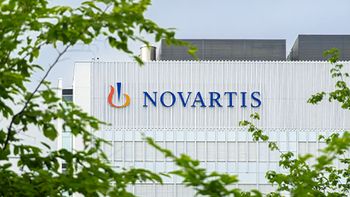
Pharma Pulse: FDA Appoints Richard Pazdur as CDER Director Amid 340B Tensions and Novartis Expansion
This episode of Pharma Pulse discusses how Dr. Richard Pazdur’s appointment signals a new era for FDA drug evaluation, why hospitals are opposing the government’s 340B pilot program, and how Novartis is expanding its US manufacturing footprint with a new radioligand therapy facility in California.
Welcome to Pharma Pulse, a Pharmaceutical Commerce podcast where we bring you the latest insights shaping patient access, supply chain/logistics, data & tech, and healthcare innovation. I’m your host, and in today’s headlines, HHS and FDA appoint Dr. Richard Pazdur as director of the Center for Drug Evaluation and Research, hospitals push back against a new 340B pilot program, and Novartis opens up a new radioligand therapy production plant in Carlsbad, CA.
- The Department of Health and Human Services and the FDA have officially appointed Richard Pazdur, MD, as the
new director of the FDA’s Center for Drug Evaluation and Research. Pazdur, who is expected to continue his service as director of the Oncology Center of Excellence until a successor is appointed, is widely recognized for accelerating the review and approval of innovative cancer therapies. His promotion underscores the FDA’s ongoing focus on speeding access to safe, effective treatments and strengthening clinical evidence standards across therapeutic areas. - In other policy news, hospitals are
pushing back against the federal government’s new 340B pilot program, designed to bring more transparency to the use of drug rebates and discounts. The program aims to test new payment and reporting models for hospitals receiving discounted drugs under 340B. However, health systems argue it could reduce flexibility and threaten the savings that support critical community care—especially for low-income patients. - And in industry developments, Novartis announced a
major expansion of its US manufacturing network with a new radioligand therapy facility in Carlsbad, California. The investment marks another step in the company’s effort to strengthen its supply chain and meet growing demand for radiopharmaceuticals in the US market.
That’s it for this episode of Pharma Pulse. For more insights on trends transforming pharmaceutical access and care delivery, visit
Thanks for listening—until next time, stay well and stay informed.
You can catch Pharma Pulse directly on
Newsletter
Stay ahead in the life sciences industry with Pharmaceutical Commerce, the latest news, trends, and strategies in drug distribution, commercialization, and market access.





